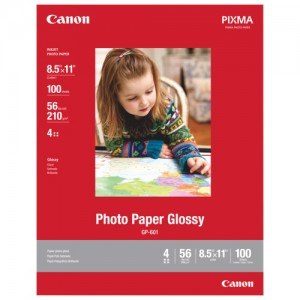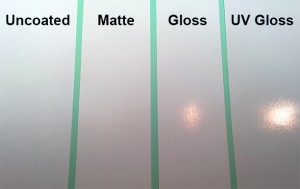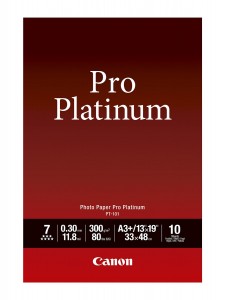 You did a whole lot of research on buying the right camera some time back and got the best one.
You did a whole lot of research on buying the right camera some time back and got the best one.
Then, you followed that by researching a high quality photo printer and backed that up with getting good photo ink cartridges.
Finally, you put in a lot of effort into clicking the right pictures with your camera.
So, why is it that your printed pictures are looking so shoddy and poor quality?
The most likely answer is that you didn’t buy the right photo paper. This is a common situation.
Most starting photography enthusiasts don’t pay attention to buying photo paper that will compliment all their other hard work. The result is they get bad prints despite their clicking brilliance.
The main reason why this happens is pure ignorance. People just don’t seem to think that they should be researching the intricacies of buying photo paper. Well, if you’re reading this, then you’ve already crossed the first barrier i.e. realising the importance of photo paper. Here, we’ll help you learn the right way of buying photo paper. The following are top 5 tips that will ensure that you don’t stumble while buying photo paper.
Tip #1 for Buying Photo Paper: Which Surface Finish?
 The first question you should be asking yourself before buying photo paper is what kind of look you want your photo to have. The look of your photo print will depend on the surface finish of the paper.
The first question you should be asking yourself before buying photo paper is what kind of look you want your photo to have. The look of your photo print will depend on the surface finish of the paper.
There are a wide variety of photo paper surface finishes that you can choose from available in the market. Unfortunately, it would be impossible to list all of them here but we can focus on the more popular ones. These include glossy, semi glossy, matte, canvas, and classic.
Glossy photo paper is the most widely used. In fact, when it comes to buying photo paper, most people tend to go for glossy surface finishes. As the name suggests, glossy photo paper will result in prints that will reflect light more readily.
Matte is another popular surface finish. Matte finish usually provides great contrast of darker and lighter colours. Moreover, they tend to display more detail than glossy photo papers. Semi glossy photo paper is the bridge between glossy and matte surface finishes.
Canvas photo papers tend to provide the same rich texture, colour detailing, and saturation that matte papers provide. Moreover, unlike glossy photo papers, these tend to have a rough texture to them which may be visible from certain angles. These photo papers are good if you plan on framing and hanging your photos.
Finally, classic photo paper creates artsy prints. They tend to recreate the look that paintings have. So, colours are bright. There are many different types of photo paper in this category. They vary in terms of the level of contrast, colour saturation, and even texture. Sometimes, classic photo papers may even have hues of different colours like beige.
Tip #2 for Buying Photo Paper: Is Longevity Important?
 If you’ve seen the photos that your parents or grandparents clicked in their time, you’ll notice that those images have started to fade. This is natural. Photos get old and when they do they fade. If you put a photo in direct sunlight, it will fade even quicker.
If you’ve seen the photos that your parents or grandparents clicked in their time, you’ll notice that those images have started to fade. This is natural. Photos get old and when they do they fade. If you put a photo in direct sunlight, it will fade even quicker.
The longevity of a photo print depends on two things. The first is the photo ink and the other is photo paper. Hence, if longevity and durability are important to you, then you need to be very careful while buying photo paper.
It isn’t easy finding the archival rating of a photo paper. However, there are resources you can use. You can ask the vendor directly about the longevity of the photo paper you plan on buying.
Alternatively, you can do independent research.
One of the best places to do independent research on longevity of photo paper is the Wilhelm Imaging Research website. Also, pay attention to the recommendations in your printer manual.
Tip #3 for Buying Photo Paper: Will The Whiteness Last?
You should consider paper whiteness also while buying photo paper. However, you should do this with the understanding that some papers are artificially whitened. These will typically be those photo papers that are available for cheap but boast of high levels of whiteness.
The problem with artificially whitened photo papers is that they look great when they come out of your printer but given time start showing colour deviations. For instance, an artificially whitened photo paper will start to get yellow after some time ruining your photograph.
One of the best ways of checking if a photo paper is artificially whitened is to see if it has the same whiteness on both sides. Often, manufacturers artificially whiten only one side of the paper which makes this a tell-tale sign of the same.
Tip #4 for Buying Photo Paper: Are Printer Models Important?
In the manual of your photo printer, you will see recommendations on what type of photo paper and photo ink you should be using. Original Equipment Manufacturers (OEMs) will always try to get you to buy branded consumables as that is where they get most of their profits from.
However, you don’t have to follow these recommendations to the tee. Instead, you need to use them as your starting point. Once you know the type of photo paper recommended by your printer manufacturer, you can easily go only and find cheaper alternatives.
It isn’t all that different from buying generic or compatible photo ink cartridges. And, as you know, these generic cartridges do tend to work so long as you buy them from the right retailer.
The same is true with compatible or generic photo paper. If you choose to go with generic photo paper, you want to make sure that you’re buying from a reliable retailer who has a good return policy and reputation in the market.
Tip #5 for Buying Photo Paper: How Much Should You Pay?
There isn’t that much of a leeway when it comes to buying photo paper. You will essentially get exactly what you pay for. Furthermore, while there is a difference between the prices of generic photo paper and genuine photo paper, it isn’t as great as the difference in the prices of compatible and genuine photo ink.
This is the biggest hitch that people face when it comes to buying photo paper. It is very common for people to not use high quality photo paper simply because it is expensive.
One of the best ways of marrying the twin needs of quality and economy is buying photo papers of two types – one cheap or averagely priced for common use and one expensive or high quality for special print jobs. Depending upon the situation and the importance of the print job, you can choose which photo paper you want to use.
Buying photo paper is one of the most crucial aspects of clicking and printing your own photo. If you’ve been clicking and printing your own photos for some time but haven’t seen much improvement lately, then one of the best ways for you to improve the quality of your photos is buying photo paper of a higher quality.
You can find samples quite easily in the market, so it shouldn’t be all that difficult.
Leave a Reply